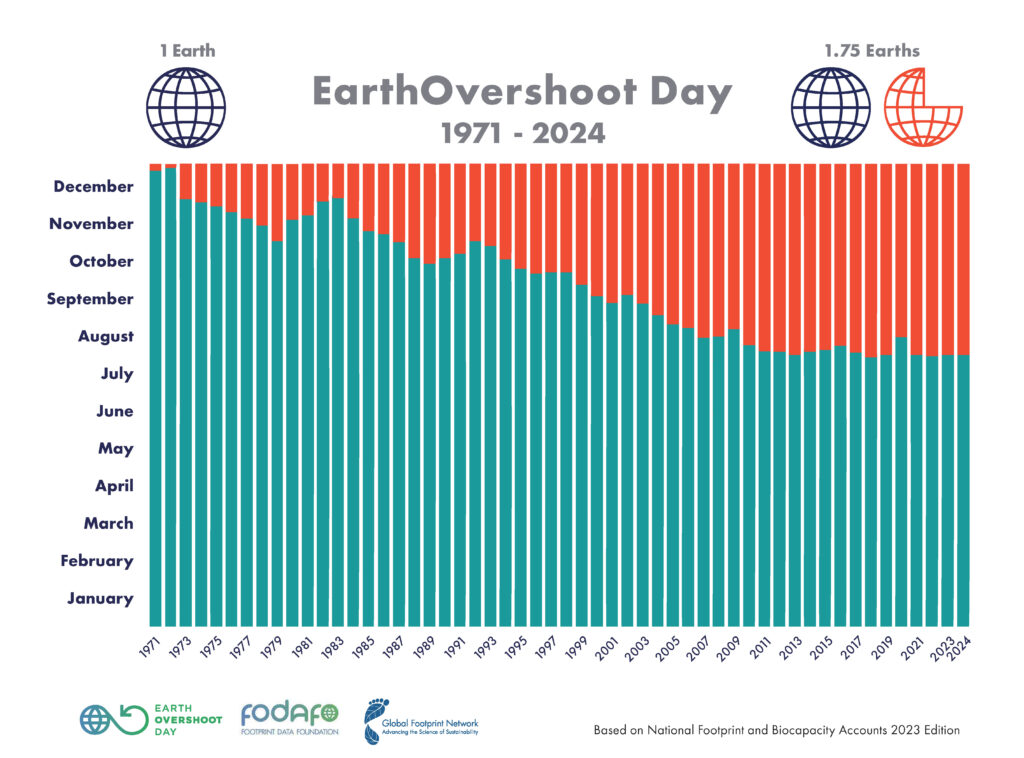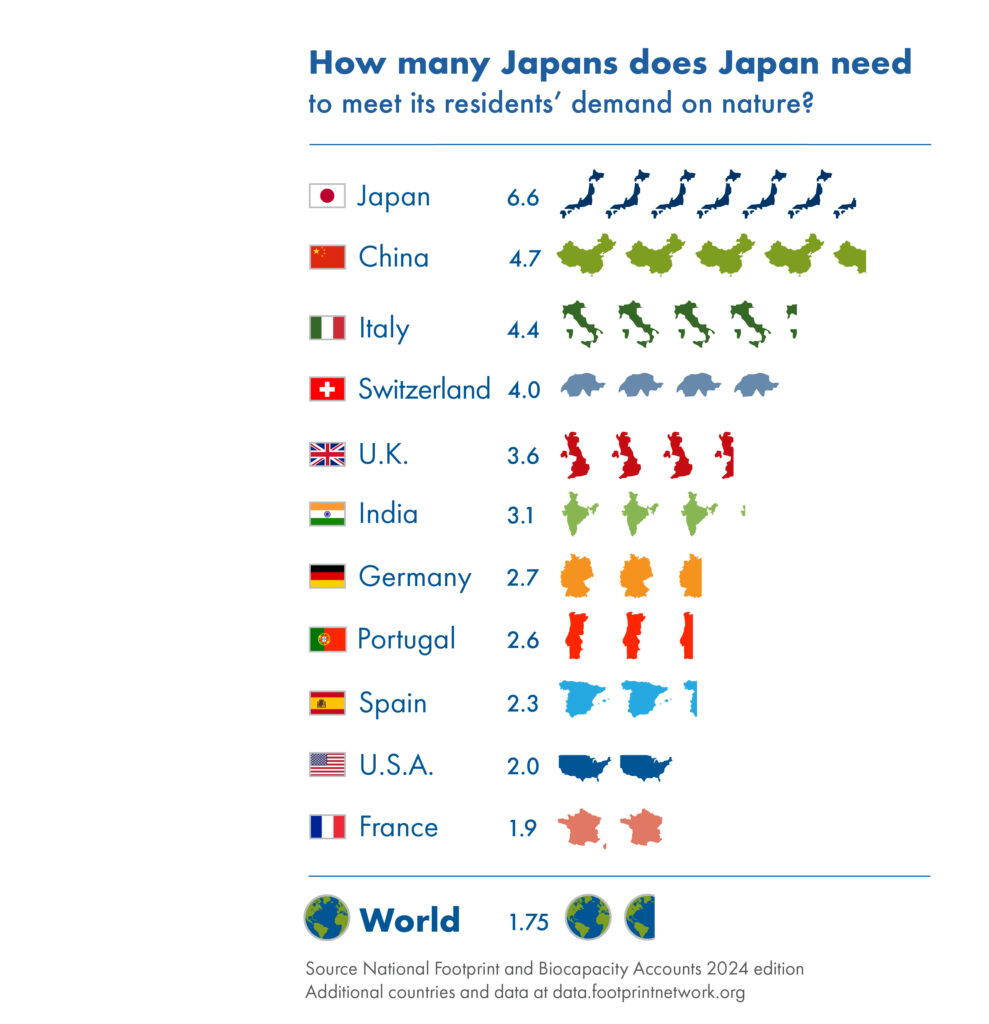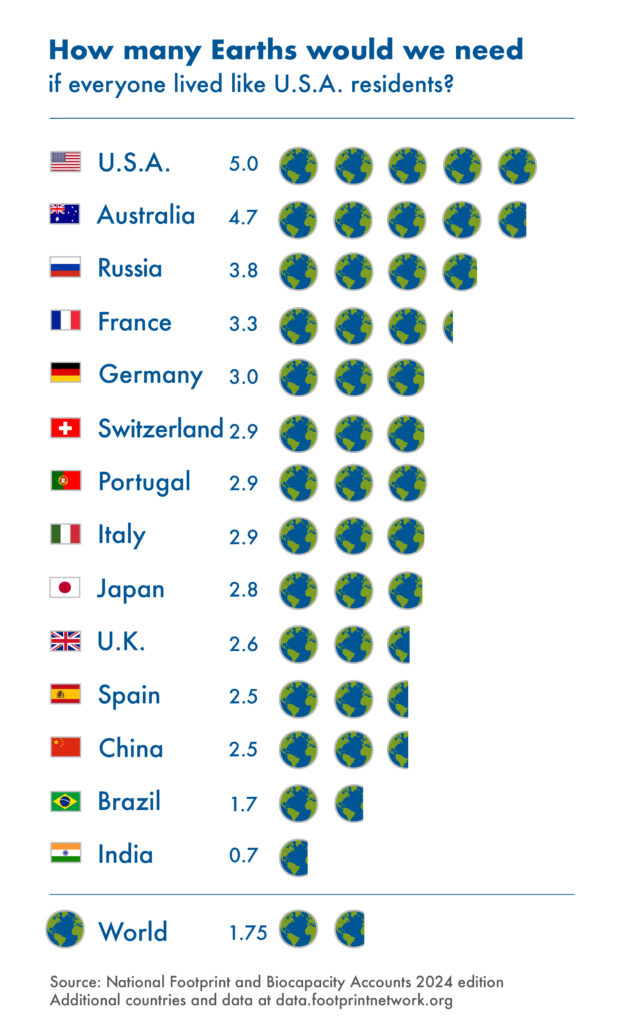

Earth Overshoot Day 2024 falls on August 1st
Ending Overshoot: Humanity’s Critical Race
GENEVA, SWITZERLAND — August 1st marks Earth Overshoot Day, the date when humanity’s demand on nature’s resources surpasses Earth’s capacity to regenerate them for the given year. This day is calculated by Global Footprint Network, the international sustainability organization that pioneered the Ecological Footprint.
Earth Overshoot Day falling on August 1st signifies that humanity is currently using nature 1.7 times faster than our planet’s ecosystems can regenerate. This overshoot is possible because people can harvest more than is being renewed, thereby depleting natural capital. Such overuse compromises resource security. The consequences of ecological overspending are evident in deforestation, soil erosion, biodiversity loss, and the buildup of carbon dioxide in the atmosphere, which leads to more frequent extreme weather events and reduced food production.
Although Earth Overshoot Day has held steady for a decade, it remains early in the year, occurring just after 7 months of the year have passed. The remainder of the year humanity lives from overuse, further depleting the biosphere. Therefore, even as the date holds steady, the pressure on the planet keeps increasing, since damage from overshoot accumulates over time.

Lewis Akenji, Global Footprint Network board member, states: “Overshoot will end. The question is how: by design or by disaster. A planned transition gives us better security than ceding to the whims of a planet thrown off balance by overshoot.”
Just as athletes achieving breakthroughs through focus, innovation, and effort, humanity needs to do the same if it wants to succeed in ending overshoot by design. In 1968, Dick Fosbury revolutionized the high jump at the Mexico Olympics, at a time when humanity used just just 0.9 Earths. By 1988, when Olympian sailor Lawrence Lemieux stopped mid-race to rescue two capsized competitors, humanity’s demand on nature had jumped to 1.3 Earths. In 2008, as Usain Bolt broke his first Olympic records, it had grown to 1.6 Earths. Can we summon the same determination to reverse our ecological overshoot?
“Ending overshoot is essential. It is also possible, given human potential,” comments Debora Barioni of Global Footprint Network.
Solutions that #MoveTheDate are available and financially advantageous. Opportunities exist in five key areas: Cities, Energy, Food, Population, and Planet. The Power of Possibility highlights options that move Earth Overshoot Day. For example, cutting CO2 emissions from fossil fuels by 50% would #MoveTheDate by three months. There are also businesses that #MoveTheDate as they expand. Such businesses may be the ones best positioned to gain value in a future of climate change and resource constraints.
In 1936, Jesse Owens won four gold medals – humanity used 0.6 Earths.
In 1968, Dick Fosbury revolutionized the high jump and won gold – humanity used 0.9 Earths.
In 1992, the US basket ball ‘dream team’ won gold – humanity used 1.2 Earths.


Additional resources
- How Earth Overshoot Day 2024 was calculated
- How to compare the date of Earth Overshoot Day to previous years
- Ecological Footprint data for more than 200 countries and regions
- Infographics and videos available for media
- Introduction to the implications of overshoot
- Ecological Footprint Data
- What it means for businesses
- Solutions to reverse ecological overshoot and bolster biological regeneration
- Ecological Footprint: Managing our Biocapacity Budget (book)
- Footprint Calculator www.footprintcalculator.org
About the Ecological Footprint
The Ecological Footprint is the most comprehensive biological resource accounting metric available. Based on 15,000 data points per country per year, it adds up all of people’s competing demands for biologically productive areas – food, timber, fibers, carbon sequestration, and accommodation of infrastructure. Currently, the carbon footprint, i.e., the carbon emissions from burning fossil fuel, make up 61 percent of humanity’s Ecological Footprint. The National Footprint and Biocapacity Accounts are now produced by FoDaFo with York University in Toronto.
The book “Ecological Footprint: Managing Our Biocapacity Budget” provides an in-depth introduction, drawing on the Footprint’s 30-year experience fighting ecological bankruptcy with robust resource accounting. Excerpts available for publication.
About Global Footprint Network
Global Footprint Network is an international sustainability organization that is helping the world live within the Earth’s means and respond to climate change. Since 2003 we’ve engaged with more than 50 countries, 30 cities, and 70 global partners to deliver scientific insights that have driven high-impact policy and investment decisions. Together, we’re creating a future where all of us can thrive within the limits of our one planet. www.footprintnetwork.org
Media contacts



